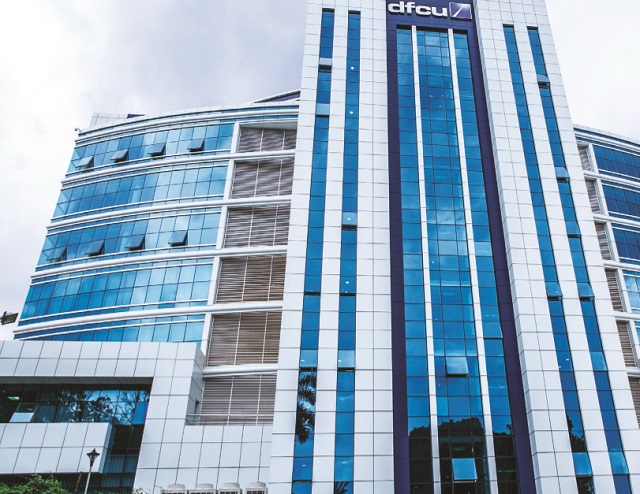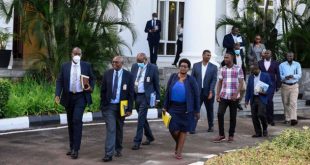
The lender’s solid asset base, good brand recognition and a good team could stir revenue growth
Kampala, Uganda | ISSAC KHISA | Dfcu Bank seem to have come to the end of its short golden run in the first half of this year with double digit drop in its net profit. The lender has recorded a 63.5% drop in net profit for the first half of this year to Shs41.6bn as it returned to its normal growth path following the full integration of assets and liabilities of the defunct Crane Bank.
In 2017, dfcu’s profit was bolstered with Shs121.8bn fair valuation of the Crane Bank assets and liabilities enabling it to record Shs 114bn as net profit. In 2016 it recorded Shs23.3bn. “As per the requirements of IFRS 3-Buisness Combination, dfcu Group was required to carry out a fair valuation of the assets required and the liabilities assumed,” officials said in a notice released on August 24.
“The fair valuation resulted into a fair value gain of Shs212.8bn that was recognised in the results for the six months ending June 30, 2017.”
The lender said the value of amortisation will be included in the financial statement over a period of five years. Meanwhile, as a result of the one-off gain valuation last year, the bank’s net income fell from Shs255bn to Shs146bn during the same period under review.
This comes barely two months since the Norwegian and Netherland government asked the Ugandan government to intervene and manage media reports and negative propaganda against dfcu that were feared to negatively impact investor confidence and general performance of the economy.
The reports claimed that the bank was on the verge of collapse and that the current Executive Director, William Sekabembe had resigned. But officials from the bank dismissed the reports in what many analysts interpreted as one way of ensuring shareholders do not lose hope in their company.
Currently Arise B.V., a joint venture comprising Norfund (the Norwegian investment fund for developing countries), Rabo Development BV and FMO (the Dutch Development Bank) holds 58% stake in dfcu. However, the lender’s equity significantly increased by 52% to Shs552bn compared with Shs363.7bn this year driven by the successful rights issue and retained earnings.
The lender’s asset base remained stable at Shs3trillion while loans and advances to customers grew by 9%. “Customer deposits grew by 10% over a period under review mainly driven by our ongoing digitalisation programme and customer confidence on our brand,” the lender said.
On the other hand, total operating costs grew by 6% during the six months to June 2018 compared with the same period last year. Officials attribute the increase in operating expenses to the Shs12bn amortisation of the bargain purchase and continued investment in the digital infrastructure.
Commenting on the performance, Aeko Ongodia, a financial analyst and the chief executive officer of Xeno Technologies, an indigenous investment fund management company said the bank’s profit reflects its normal growth trend.
“The profit for this period might be much reflective of its long term profit growth levels than for last year because of the one-off transaction,” he said. He said the bank may not record a sharp growth in profits in the future similar to the 2017 performance unless management embarks on a significant growth strategy.
Ongodia, however, said the bank has a solid asset base, good brand recognition, and a good team that could see it record substantial revenue growth in future – becoming one of the dominant players in the country’s banking sector.
This would almost put it on the battlefront with Stanbic bank – which controls nearly a third of the industry’s profits – with an asset base of Shs5.1trilion.
 The Independent Uganda: You get the Truth we Pay the Price
The Independent Uganda: You get the Truth we Pay the Price


